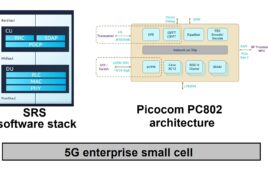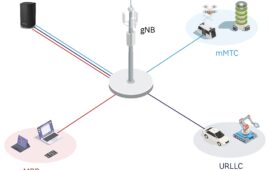CEVA’s PentaG2 baseband modem IP provides accelerated 4G/5G processing between RF circuits and Layer 2.

The signal chain in a cellular radio consists of many parts. Getting from RF to a digital data stream requires baseband demodulation, signal processing, coding for transmitters (Tx), and decoding for receivers (Rx). The PentaG2 baseband modem IP from CEVA bridges the gap, with a significant power reduction over its predecessor.
 Available in Pro and Lite versions (see block diagrams), PentaG2 occupies the space between baseband RF and protocol stack Layer 2. The PentaG2, which CEVA claims uses 80% less power that the original Penta modem IP, lets you add the modem to user devices such as mobile handsets, IoT devices, medical devices, and so on. Because the modem is software based, it’s scalable to provide functions such as ultra-reliable low-latency communications, reduced capability (RedCap) communications, sidelink and cellular V2X, and fixed-wireless access devices. It’s compatible with all 4G and 5G frequency bands because the RF circuits reside outside of this baseband modem. The PentaG2 Lite version for IoT devices supports RedCap, also known as NR-Lite, a feature included in the upcoming 3GPP Release 17.
Available in Pro and Lite versions (see block diagrams), PentaG2 occupies the space between baseband RF and protocol stack Layer 2. The PentaG2, which CEVA claims uses 80% less power that the original Penta modem IP, lets you add the modem to user devices such as mobile handsets, IoT devices, medical devices, and so on. Because the modem is software based, it’s scalable to provide functions such as ultra-reliable low-latency communications, reduced capability (RedCap) communications, sidelink and cellular V2X, and fixed-wireless access devices. It’s compatible with all 4G and 5G frequency bands because the RF circuits reside outside of this baseband modem. The PentaG2 Lite version for IoT devices supports RedCap, also known as NR-Lite, a feature included in the upcoming 3GPP Release 17.
Both versions include several coprocessors that accelerate functions such as:
- Bit demodulation unit, which supports Rx bit and log likelihood ratio (LLR) processing
- Bit modulation unit for transmit bit processing
- Equalizer and medium access control (MAC) engine
- 5G LDPC encoder/decoder
- 5G polar encoder/decoder
- Discrete Fourier Transform (DFT) processing
- Multiple input, multiple output (MIMO) processing
When developing your modem and integrating it into an SoC, you can use CEVA’s PentaG2 SoC simulator software. You can simulate the environment around the baseband modem, such as the RF components of the overall design. You also get the ability to add additional functions to the PentaG2 IP through Matlab for developing your own algorithms.




Tell Us What You Think!